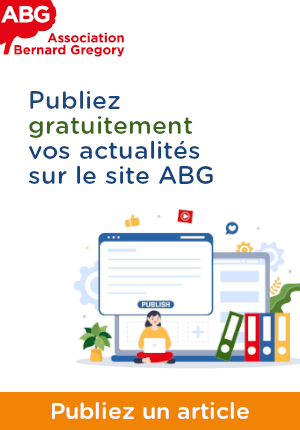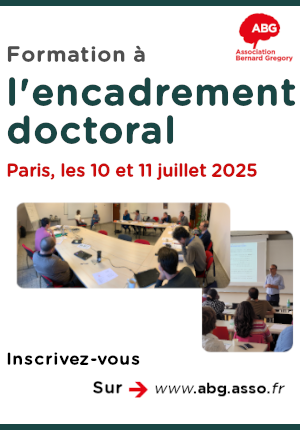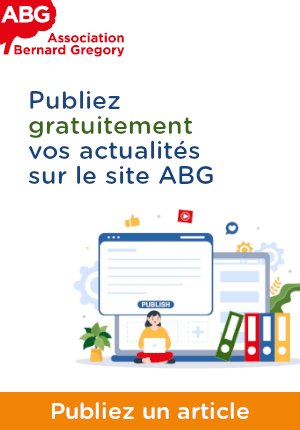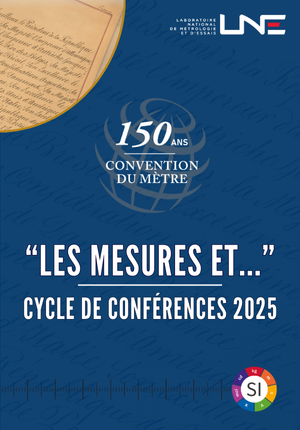EVALUATION DE LA DYNAMIQUE DE L'EAU ET DES POLLUANTS DANS UN BASSIN VERSANT À USAGE MIXTE FORTEMENT IMPACTÉ PAR LES CHANGEMENTS GLOBAUX (CLADUÈGNE, ARDÈCHE) - EDYCLA // ASSESSMENT OF WATER AND POLLUTANT DYNAMICS IN A MIXED-USE CATCHMENT STRONGLY IMPACTED
|
ABG-128919
ADUM-61781 |
Sujet de Thèse | |
| 27/02/2025 | Contrat doctoral |
Université Grenoble Alpes
St Martin d'Hères Cédex - France
EVALUATION DE LA DYNAMIQUE DE L'EAU ET DES POLLUANTS DANS UN BASSIN VERSANT À USAGE MIXTE FORTEMENT IMPACTÉ PAR LES CHANGEMENTS GLOBAUX (CLADUÈGNE, ARDÈCHE) - EDYCLA // ASSESSMENT OF WATER AND POLLUTANT DYNAMICS IN A MIXED-USE CATCHMENT STRONGLY IMPACTED
- Terre, univers, espace
géochimie, transfert, usage des sols, ressources en eau, télédétection, gestion des territoires
geochemistry, transfer, soil use, water resources, teledetection, land management
geochemistry, transfer, soil use, water resources, teledetection, land management
Description du sujet
Les bassins versants de méso-échelle sont souvent des territoires d'usage mixte (agricole, urbain, touristique, forestier) et vulnérables aux changements globaux. La compréhension des liens entre usage des sols et processus hydro-géochimiques à des échelles fines permettrait de mieux orienter les politiques publiques en terme de gestion des ressources du territoire, d'utilisation d'intrants agricoles, ou d'impacts du rejet d'eaux usées sur les hydrosystèmes en aval. L'acquisition d'une base de données unique dans le cadre du SNO OHMCV (depuis 2011) et de l'ANR CHYPSTER (2021-2025) mêlant résultats d'enquêtes auprès des acteurs socio-économiques du territoire, cartes d'usage des sols, suivis spatiaux et temporels hydrosédimentaires et biogéochimiques permet de proposer ce sujet de thèse dans des conditions optimales. L'objectif est de mieux comprendre les voies de transfert de l'eau, les sources et la mobilité des polluants dans un bassin versant à usage mixte. L'accent sera mis sur les sous-bassins élémentaires afin de se situer au plus près des sources diffuses de polluants, en proposant des acquisitions complémentaires sur les états de surface à partir de la télédétection (drone et satellite), des collectes de ruissellement lors des épisodes de pluie intense et une modélisation hydrologique spatialisée adaptée aux bassins hétérogènes de méso-échelle à rivières intermittentes. Ce modèle servira d'outil pour travailler avec les acteurs du territoire pour une meilleure gestion de l'eau et des sols dans le cadre des changements globaux.
------------------------------------------------------------------------------------------------------------------------------------------------------------------------
------------------------------------------------------------------------------------------------------------------------------------------------------------------------
Mesoscale catchments are often areas of mixed use (agricultural, urban, tourism, forestry) and are vulnerable to global change. Understanding the links between land use and hydro-geochemical processes at fine scales would help to better guide public policies in terms of land resource management, the use of agricultural inputs, or the impact of wastewater discharges on downstream hydrosystems. The acquisition of a unique database as part of the OHMCV SNO (since 2011) and the CHYPSTER ANR (2021-2025), combining the results of surveys of local socio-economic players, land-use maps, and spatial and temporal monitoring of hydrosedimentary and biogeochemical processes, means that this thesis subject can be proposed under optimum conditions. The aim is to gain a better understanding of water transfer routes and the sources and mobility of pollutants in a mixed-use catchment. The focus will be on the elementary sub-basins in order to get as close as possible to the diffuse sources of pollutants, by proposing complementary acquisitions of surface conditions from remote sensing (drone and satellite), runoff collections during intense rainfall events and spatialised hydrological modelling adapted to heterogeneous mesoscale basins with intermittent rivers. This model will be used as a tool for working with local stakeholders to improve water management.
------------------------------------------------------------------------------------------------------------------------------------------------------------------------
------------------------------------------------------------------------------------------------------------------------------------------------------------------------
Début de la thèse : 01/10/2025
WEB : https://ohmcv.osug.fr/
------------------------------------------------------------------------------------------------------------------------------------------------------------------------
------------------------------------------------------------------------------------------------------------------------------------------------------------------------
Mesoscale catchments are often areas of mixed use (agricultural, urban, tourism, forestry) and are vulnerable to global change. Understanding the links between land use and hydro-geochemical processes at fine scales would help to better guide public policies in terms of land resource management, the use of agricultural inputs, or the impact of wastewater discharges on downstream hydrosystems. The acquisition of a unique database as part of the OHMCV SNO (since 2011) and the CHYPSTER ANR (2021-2025), combining the results of surveys of local socio-economic players, land-use maps, and spatial and temporal monitoring of hydrosedimentary and biogeochemical processes, means that this thesis subject can be proposed under optimum conditions. The aim is to gain a better understanding of water transfer routes and the sources and mobility of pollutants in a mixed-use catchment. The focus will be on the elementary sub-basins in order to get as close as possible to the diffuse sources of pollutants, by proposing complementary acquisitions of surface conditions from remote sensing (drone and satellite), runoff collections during intense rainfall events and spatialised hydrological modelling adapted to heterogeneous mesoscale basins with intermittent rivers. This model will be used as a tool for working with local stakeholders to improve water management.
------------------------------------------------------------------------------------------------------------------------------------------------------------------------
------------------------------------------------------------------------------------------------------------------------------------------------------------------------
Début de la thèse : 01/10/2025
WEB : https://ohmcv.osug.fr/
Nature du financement
Contrat doctoral
Précisions sur le financement
Concours pour un contrat doctoral
Présentation établissement et labo d'accueil
Université Grenoble Alpes
Etablissement délivrant le doctorat
Université Grenoble Alpes
Ecole doctorale
105 STEP - Sciences de la Terre de l'Environnement et des Planètes
Profil du candidat
- De solides bases en hydrologie et hydrogéologie
- Programmation scientifique (Python, R,…)
- Expériences préliminaires en modélisation hydrologique ou hydrogéologique
- Expériences en géomatique (traitement de données spatialisées, traitement d'images, SIG)
- des bases en géochimie et/ou microbiologie
- Une capacité de travail en collectif, le travail demandé s'articulant autour de nombreuses disciplines pour lesquelles il faudra consulter les experts
- Une aisance à la lecture et la synthèse de littérature scientifique anglophone
- Intérêt pour la question de l'eau, sa gestion, sa qualité dans un territoire rural
- Intérêt pour le travail de terrain
- A solid background in hydrology and hydrogeology - Scientific programming (Python, R, etc.) -Preliminary experience in hydrological modelling - Experience in geomatics (spatial data processing, image processing, GIS) - a background in geochemistry and/or microbiology - Ability to work as part of a team, as the work required involves a number of disciplines for which experts will need to be consulted - Ability to read and summarise English-language scientific literature - Interest in the issue of water, its management and quality in a rural area - Interest for field work
- A solid background in hydrology and hydrogeology - Scientific programming (Python, R, etc.) -Preliminary experience in hydrological modelling - Experience in geomatics (spatial data processing, image processing, GIS) - a background in geochemistry and/or microbiology - Ability to work as part of a team, as the work required involves a number of disciplines for which experts will need to be consulted - Ability to read and summarise English-language scientific literature - Interest in the issue of water, its management and quality in a rural area - Interest for field work
01/07/2025
Postuler
Fermer
Vous avez déjà un compte ?
Nouvel utilisateur ?
Besoin d'informations sur l'ABG ?
Vous souhaitez recevoir nos infolettres ?
Découvrez nos adhérents
 Ifremer
Ifremer  ASNR - Autorité de sûreté nucléaire et de radioprotection - Siège
ASNR - Autorité de sûreté nucléaire et de radioprotection - Siège  Aérocentre, Pôle d'excellence régional
Aérocentre, Pôle d'excellence régional 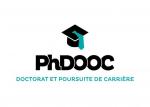 PhDOOC
PhDOOC  Généthon
Généthon  CASDEN
CASDEN  CESI
CESI  Nokia Bell Labs France
Nokia Bell Labs France 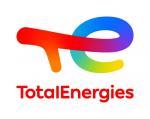 TotalEnergies
TotalEnergies  MabDesign
MabDesign  MabDesign
MabDesign  Tecknowmetrix
Tecknowmetrix  SUEZ
SUEZ  Groupe AFNOR - Association française de normalisation
Groupe AFNOR - Association française de normalisation  Laboratoire National de Métrologie et d'Essais - LNE
Laboratoire National de Métrologie et d'Essais - LNE  Institut Sup'biotech de Paris
Institut Sup'biotech de Paris  ONERA - The French Aerospace Lab
ONERA - The French Aerospace Lab 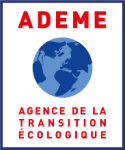 ADEME
ADEME 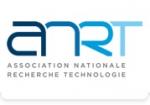 ANRT
ANRT


